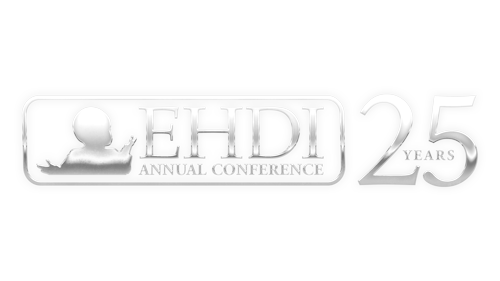2026 Early Hearing Detection & Intervention Conference
March 15-17, 2026 • Jacksonville, FL
3/11/2025 | 3:30 PM - 4:00 PM | Collaboration is Key: Supporting families using AAC in homes from Birth to Three | 306/307
Collaboration is Key: Supporting families using AAC in homes from Birth to Three
20-40% of children with hearing loss are born with additional disabilities that impact their overall development. (Dirks, 2022). Children with hearing loss who have additional disabilities, including those who are DeafBlind and those who have intensive support needs, may benefit from utilizing Augmentative and Alternative Communication (AAC) in the home. Introducing AAC early can support communication development and increase overall communication outcomes. (Jensen et al., 2023). Collaboratively supporting families using AAC with their children is essential to successful communication outcomes. This may include Speech Language Pathologists, Teachers of the Visually Impaired, Occupational Therapists, Physical Therapists, and others. Successful AAC implementation requires centering the family as the most important part of the team and collaborating with these providers on how to make communication the most accessible throughout the family’s day. Early Intervention Teachers of the Deaf/Hard of Hearing have a unique role as part of the team supporting families utilizing AAC. Their knowledge of communication development, including the impacts of hearing loss on language development, early language acquisition, language facilitation strategies, and family coaching strategies, is essential in helping the family support their child in becoming a successful communicator. This presentation will provide an overview of AAC in birth to three, highlight case studies of successful collaboration with families and other providers in North Carolina, discuss TOD/HH roles in collaborative teams and provide resources for supporting families using AAC in their homes.
- The learner will explain why AAC use can be beneficial for children and the common types of AAC used in homes of children from birth to three.
- The learner will be able to discuss the role of the TOD/HH in supporting families using AAC devices and the importance of collaborative team approaches.
- The learner will identify three resources for supporting families using AAC.
Presentation:
3545975_18163NeenaMalosky.pdf
Handouts:
3545975_18163NeenaMalosky.pdf
Transcripts:
CART transcripts are NOT YET available, but will be posted shortly after the conference
Presenters/Authors
Neena Malosky
(Primary Presenter), NC ELSSP-HI, neena.malosky@dpi.nc.gov;
Neena Malosky is a Teacher of the Deaf and Hard of Hearing in Summerfield, North Carolina. Neena has worked with children with hearing loss and their families for 19 years in both the public school system and currently in the NC Early Learning Sensory Support Program. She received her undergraduate degree at the University of North Carolina at Greensboro (UNCG) and her graduate degree from The University of San Diego in partnership with The John Tracy Clinic. Neena is a former adjunct professor at UNCG in the Deaf Education program. In addition to her role in the NC ELSSP, Neena serves on the NC DeafBlind Project Core Team. She leads a collaborative team of ELSSP Teachers of the Deaf/Hard of Hearing, Teachers of the Visually Impaired and Speech Therapists to develop trainings on supporting families of children using Augmentative and Alternative Communication in the home. When not at work, Neena loves listening to audiobooks and spending time with her husband, 13 year old son and two dogs.
ASHA DISCLOSURE:
Financial -
No relevant financial relationship exists.
Nonfinancial -
No relevant nonfinancial relationship exists.
AAA DISCLOSURE:
Financial -
Financial relationship with North Carolina Department of Public Instruction.
Nature: None.
Nonfinancial -
Non-Financial relationship with North Carolina Department of Public Instruction.
Nature: None.
